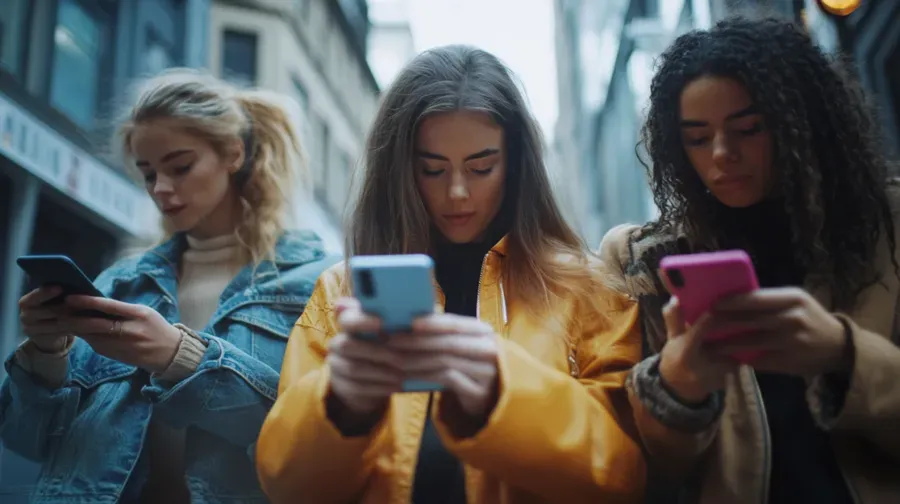What is Text Messaging?
Text messaging, commonly known as texting, is a form of digital communication that involves sending and receiving short written messages between mobile devices, computers, or other electronic systems. It is widely used for both personal and professional communication, allowing people to exchange information quickly and efficiently. Text messaging has become an integral part of modern communication, shaping the way individuals, businesses, and even governments interact.
How Text Messaging Works
Text messages are typically sent through the Short Message Service (SMS), which enables users to send text-based messages containing up to 160 characters. If a message exceeds this limit, it is usually broken into multiple segments and reassembled upon receipt. Another form of text messaging, the Multimedia Messaging Service (MMS), allows users to send multimedia content such as images, videos, and audio files.
Text messages are transmitted over cellular networks, ensuring that they can be sent and received even in areas with limited internet access. Some modern messaging applications also utilize internet-based protocols, allowing users to send messages over Wi-Fi or mobile data networks. This hybrid approach has expanded the accessibility and functionality of text messaging.

A Brief History of Text Messaging
The origins of text messaging can be traced back to early telecommunication technologies in the 1930s, when teletypewriter systems were used to send short messages over telegraph lines. The concept evolved over the decades, with paging systems in the 1980s laying the groundwork for modern texting.
A pivotal moment in the history of text messaging occurred in 1992 when Neil Papworth, an engineer, sent the first-ever SMS message, “Merry Christmas,” from his computer to a mobile phone on the Vodafone network in the UK. This event marked the beginning of a new era in digital communication, though it took several years for SMS to become widely adopted by consumers.
By the early 2000s, text messaging had gained immense popularity, with billions of messages being sent daily worldwide. The introduction of smartphones further revolutionized texting by incorporating messaging apps, predictive text, and multimedia capabilities.
The Evolution of Text Messaging Features
Text messaging has evolved significantly since its inception, incorporating various enhancements to improve the user experience. Some key developments include:
1. Enhanced Messaging Service (EMS)
EMS was introduced as an improvement to basic SMS, allowing users to send formatted text, special characters, simple animations, and downloadable ringtones. Though it was not as widely adopted as its successor, MMS, it represented an early attempt to expand the capabilities of text messaging.
2. Multimedia Messaging Service (MMS)
MMS was developed to enable the exchange of multimedia content such as images, videos, and audio files. This advancement significantly enhanced communication, making it possible to share more expressive and visually engaging messages.
3. Rich Communication Services (RCS)
RCS is the next-generation messaging protocol designed to replace SMS and MMS. It provides advanced features such as high-resolution photo sharing, read receipts, typing indicators, and enhanced group chat capabilities. Unlike SMS, which relies on cellular networks, RCS operates over mobile data and Wi-Fi, offering a more interactive messaging experience.
4. Internet-Based Messaging Apps
With the rise of the internet, messaging apps such as WhatsApp, iMessage, Facebook Messenger, and Telegram have gained popularity. These platforms allow users to send messages, make voice and video calls, and share multimedia content over the internet. They provide greater flexibility and eliminate SMS fees, making them a preferred alternative for many users.
The Cultural Impact of Text Messaging
Text messaging has had a profound impact on communication and social interaction. It has influenced language, etiquette, and even business operations. Some key cultural effects of text messaging include:
1. The Rise of Texting Abbreviations and Slang
To save time and fit within character limits, users developed abbreviations and acronyms such as “LOL” (laugh out loud), “BRB” (be right back), and “OMG” (oh my god). Over time, these abbreviations have become a natural part of everyday conversation, even making their way into spoken language.
2. The Use of Emojis and Emoticons
Emojis and emoticons have added a new layer of expression to text messaging. While early text messages relied on simple emoticons like “:)” to convey emotions, modern smartphones offer thousands of emojis that can communicate feelings, activities, and objects. These symbols help to add nuance and context to digital conversations.
3. Business and Customer Communication
Text messaging is now widely used in professional settings. Businesses use SMS for customer service, appointment reminders, marketing promotions, and internal communication. Text messaging enables instant and direct interaction with customers, improving engagement and efficiency.
4. Social and Psychological Effects
The convenience of text messaging has altered the way people interact. It has facilitated long-distance communication, strengthened relationships, and even created new social norms. However, excessive texting can also lead to issues such as miscommunication, reduced face-to-face interactions, and dependency on digital communication.
Safety and Legal Considerations in Text Messaging
While text messaging offers numerous benefits, it also presents safety and legal concerns that must be addressed.
1. Texting While Driving
One of the most significant dangers of texting is its association with distracted driving. Sending or reading a text message while operating a vehicle increases the risk of accidents. Many countries have implemented strict laws prohibiting texting while driving to improve road safety.
2. Texting While Walking
Pedestrians who engage in texting while walking may become distracted, leading to accidents or injuries. Cities have started implementing awareness campaigns and designated “texting lanes” to address this issue.
3. Cybersecurity Risks
Text messaging can be vulnerable to phishing scams, spam, and unauthorized data access. Users should be cautious about sharing sensitive information through text messages and be aware of potential threats such as smishing (SMS phishing).
4. Legal and Compliance Issues
Businesses that use text messaging for marketing or customer communication must comply with regulations such as the Telephone Consumer Protection Act (TCPA) in the U.S., which restricts unsolicited messages. Companies must obtain user consent before sending promotional texts.
Technological Innovations and the Future of Text Messaging
The future of text messaging is shaped by continuous technological advancements, including artificial intelligence, automation, and integration with smart devices.
1. AI-Powered Chatbots
Businesses are increasingly using AI-driven chatbots to handle customer inquiries via text messages. These bots can provide instant responses, improve customer service, and automate repetitive tasks.
2. Integration with Smart Devices
With the rise of smart assistants like Siri, Google Assistant, and Alexa, users can send and receive text messages through voice commands. This hands-free approach enhances accessibility and convenience.
3. Blockchain and Secure Messaging
Blockchain technology is being explored as a means to enhance the security of text messaging. Decentralized messaging platforms aim to provide encrypted, tamper-proof communication.
4. The Expansion of 5G and Messaging Capabilities
The rollout of 5G networks is expected to enhance text messaging by providing faster transmission speeds, reduced latency, and improved multimedia sharing capabilities. This advancement will further bridge the gap between traditional texting and internet-based messaging services.
SMS and MMS 101: How Text and Multimedia Messages WorkConclusion
Text messaging has revolutionized communication, providing a fast, reliable, and versatile means of interaction. From its humble beginnings with SMS to the emergence of rich multimedia messaging and AI-driven chatbots, text messaging continues to evolve with technology. As new innovations emerge, text messaging will remain an essential part of personal and professional communication, shaping the way people connect in the digital age.












